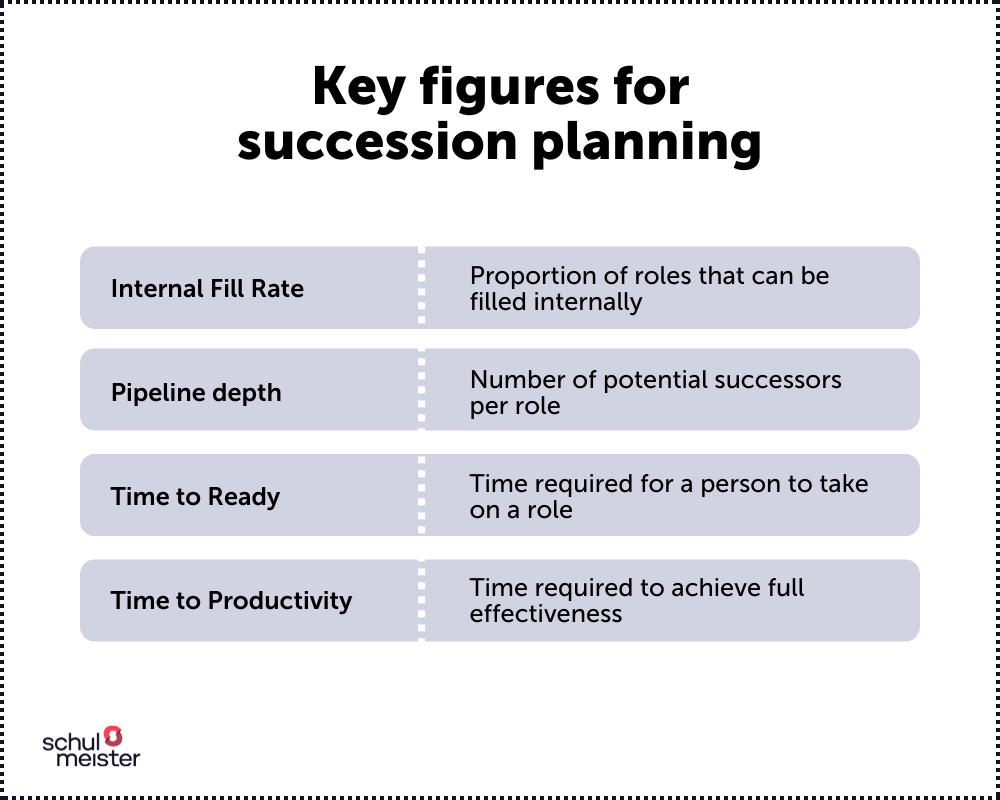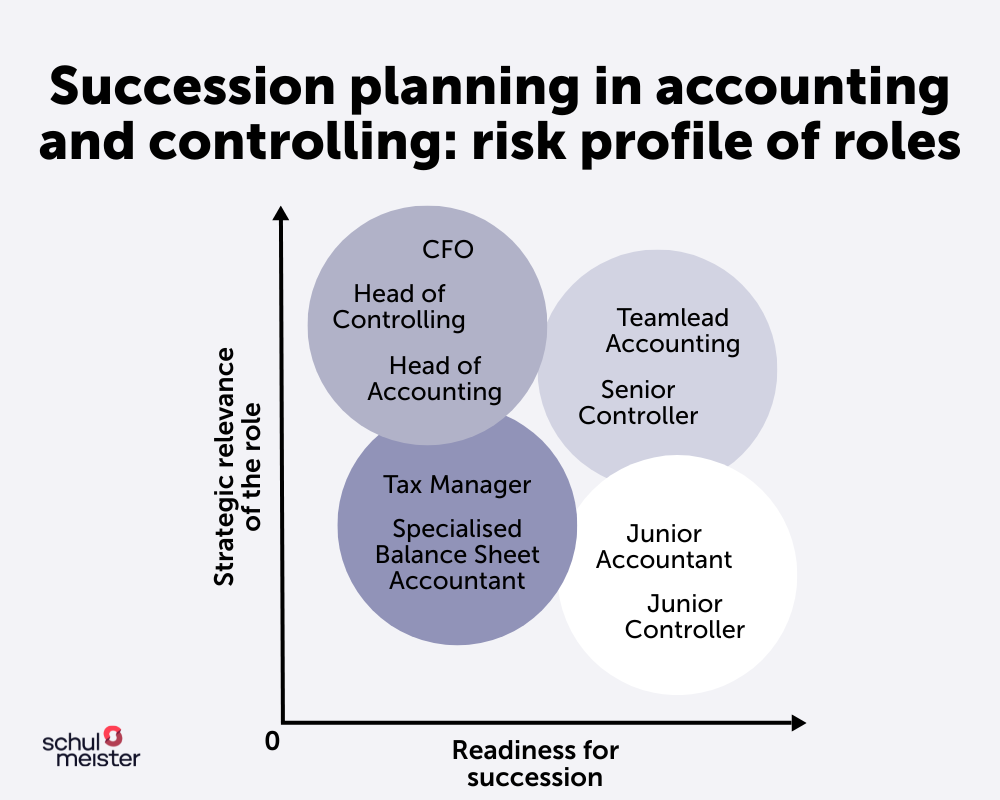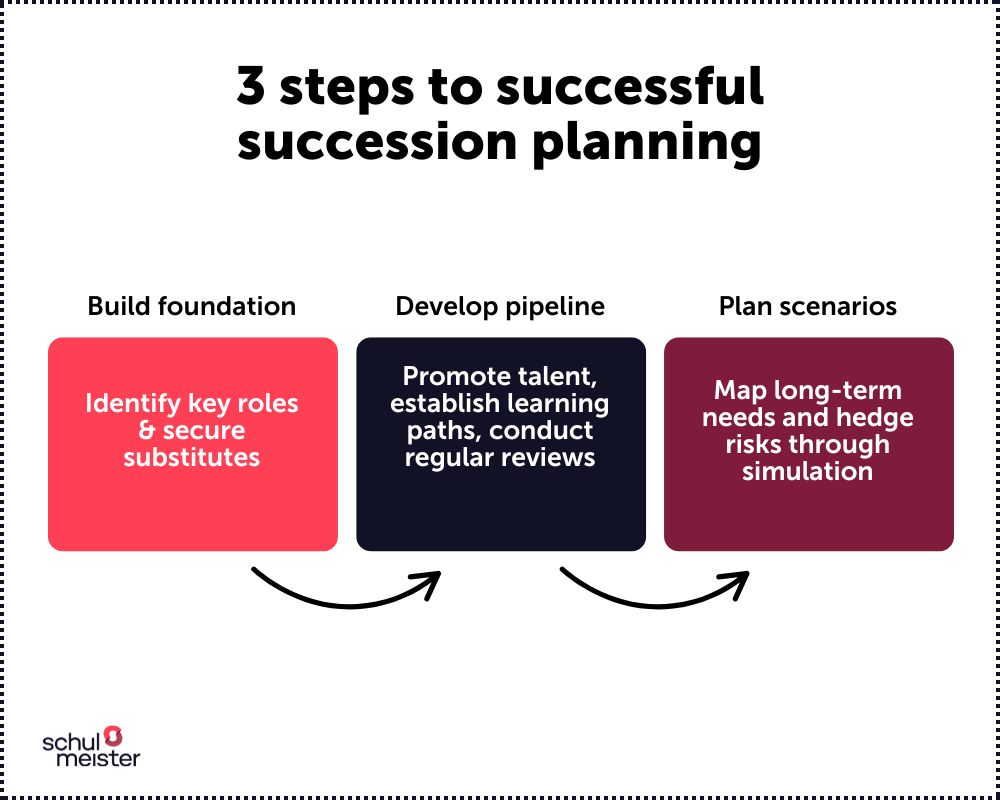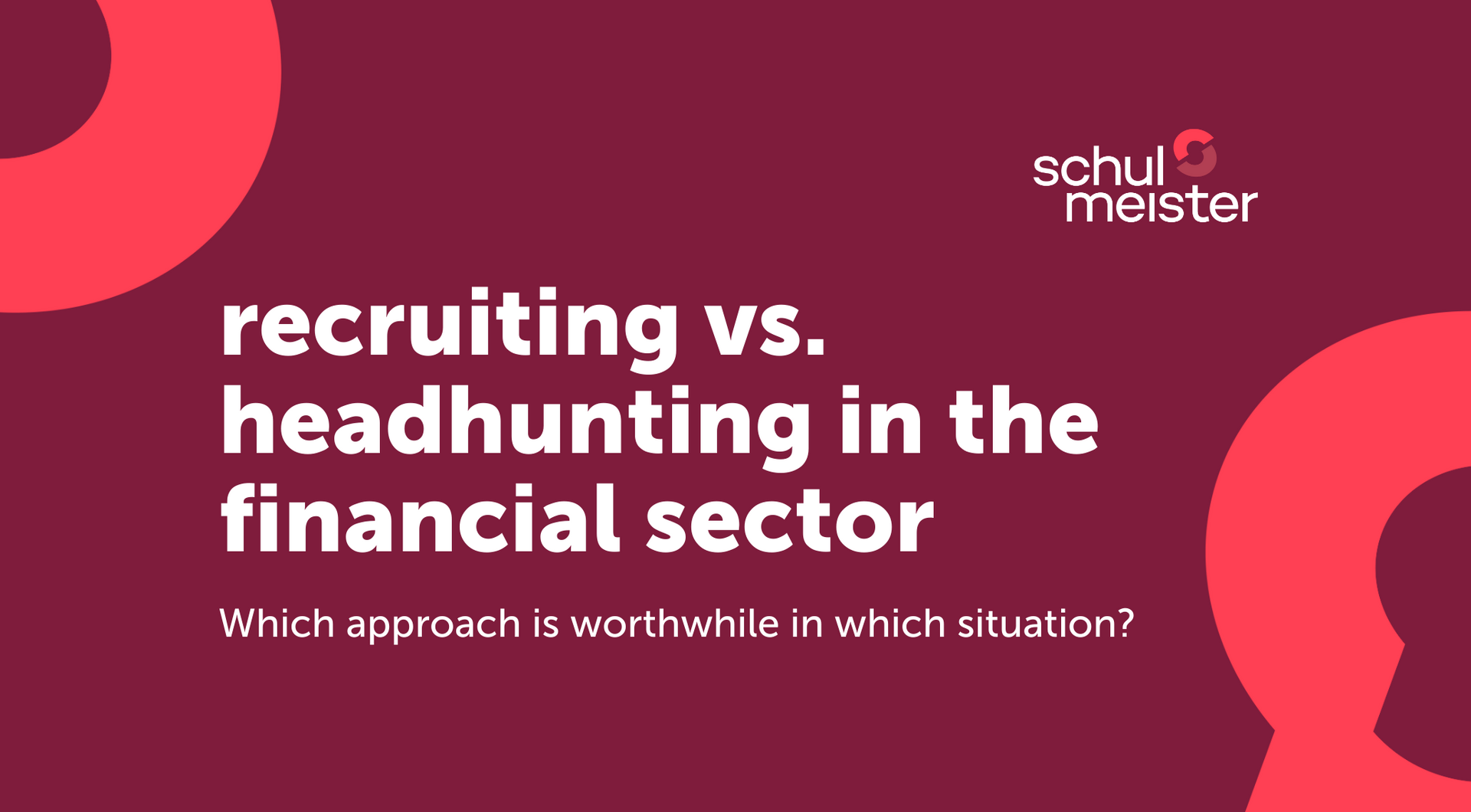Short answer: How does strategic succession planning work?
Strategic succession planning means securing critical roles in advance, actively developing talent pipelines and integrating CFO, HR and specialist departments into a controllable governance structure. Impact is achieved when companies systematically build internal potential, develop successors transparently and manage them using clear KPIs such as internal fill rate, bench strength and time-to-productivity.
Schulmeister is your specialist in recruiting:
Definition: What is strategic succession planning?
A holistic, forward-looking process for securing key roles: from identifying critical positions to systematic talent and competence management to planned handover – with clear decision-making paths, metrics and review cycles. Best practices show that successful companies approach succession planning as a process, not as a discussion about individuals – in a structured, fair and diversity-sensitive manner.
Responsibility of company management for succession planning
- Demographics & labour market: In Europe, the proportion of the population of working age is shrinking, while the proportion of older people is growing significantly. Forecasts show a decline in the working population in most EU countries by 2050 and a significant increase in the population aged 85 and over. This increases succession and knowledge risks in companies (source: Eurostat, 2025).
- Talent shortage & competitive pressure: HR studies emphasise ongoing recruitment hurdles; organisations must plan strategically instead of replacing staff on an ad hoc basis (source: SHRM, 2023).
- Shift to ‘human sustainability’: Leading trends are shifting the focus from pure staffing to development and high-performing, adaptive organisations – succession planning is a key lever in this regard (source: Deloitte, 2024)
Roles and responsibilities in succession planning
Effective succession planning can only succeed if all relevant functions within the company are involved and their tasks are clearly defined.
CEO and Executive Board
The top management sets the direction. It develops a clear vision, ensures binding governance structures and makes sure that succession planning is anchored in the corporate strategy. Setting an example is equally important: when the board and management demonstrate the value of long-term planning, this has an impact on the entire organisation.
CFO
The finance department plays a central role in resource management. It is responsible for financing development programmes, securing capacities and ensuring that key figures are systematically collected and evaluated. These include the internal fill rate, bench strength ratios and the average time it takes for a successor to become effective.
HR
The human resources department designs the processes, ensures consistent assessments and develops the necessary structures for learning and further training. It also pays attention to diversity and fairness to ensure that opportunities are distributed transparently and that diversity is guaranteed in the pipeline.
Specialist departments
Managers in the individual business areas take responsibility for practical relevance. They identify talent, support them in mentoring programmes and give them project-related development assignments that prepare them for future key roles.
Key figures that truly guide succession planning

Succession planning is only effective if it can be measured. The following key figures have proven themselves in practice and are firmly established in current human capital trends:
- Internal fill rate (IFR): Proportion of key roles that can be filled internally.
- Bench strength: Ratio of potential successors to a role (e.g. 2:1 or 3:1).
- Time-to-ready: Period of time required for a successor to be ready for action.
- Time-to-productivity: Time until full effectiveness after taking over a position.
- Pipeline diversity: Diversity within the succession pipeline, for example by gender, age or origin.
- Risk index: Combination of the probability of a vacancy and the potential amount of damage to the company.
These key figures enable value-oriented management. They reveal where gaps are emerging, how stable the pipeline is and whether the measures taken are actually having an effect.
How effective succession planning works

Sustainable planning begins with analysis: Which positions are critical to the company's success? Where do the greatest risks arise when vacancies occur? Clear answers to these questions should be available.
The next step is to develop talent in a targeted manner and prepare it for new tasks. This means internal support programmes, structured learning paths and regular development meetings. External recruitment remains important, but should be a supplement – not the sole solution.
Blueprint for sustainable succession planning in three phases

Phase 1 – Laying the foundations
The first step is to identify and document all key positions. Who could step in at short notice in an emergency? What substitution arrangements are already in place?
Phase 2 – Developing a pipeline
Building on this, you can develop your talent through coaching, mentoring, project responsibility and targeted further training. In addition, we recommend regular pipeline reviews to highlight progress and identify gaps.
Phase 3 – Planning long-term scenarios
Finally, you should consider scenarios over several years: How will staffing requirements change? Which roles could be difficult to fill in the future? This will result in robust strategies that go beyond short-term solutions.
Common mistakes in succession planning – and how to avoid them
Too narrow a focus on the top
Often, only top management positions are secured. Department and team leaders are left out – yet absences in these areas have a direct impact on everyday work.
Planning only in an emergency
Successors are often only sought when a departure is foreseeable. This increases the pressure and reduces the quality of the decision.
Regular reviews prevent this. INTERNAL LINK TO PRESS RELEASE
One-sided view of the outside world
External searches are no substitute for developing internal talent. Without promotion, there is a risk of losing valuable employees.
Lack of key figures
Without clear metrics, planning remains vague. Systematic measurement allows progress to be controlled and documented.
Conclusion: The role of finance and human resources departments
Successful planning is always interdisciplinary. The human resources department contributes process and development expertise. The finance department secures resources and anchors goals in corporate management. This creates a coordinated framework that makes planning realistic and sustainable.
FAQ: Frequently asked questions about succession planning
How do I measure the success of my workforce strategy for succession planning?
With key figures such as internal replacement rate, pipeline depth, time to operational readiness and productivity after handover.
Which positions should be secured first?
All functions that are highly relevant to the business – especially interface and management positions.
Why is promoting internal talent so important?
Because internal successors know the corporate culture, require less training and minimise the risk of knowledge loss.
How far into the future should planning extend?
At least three to five years, supplemented by regular scenarios and pipeline reviews.







